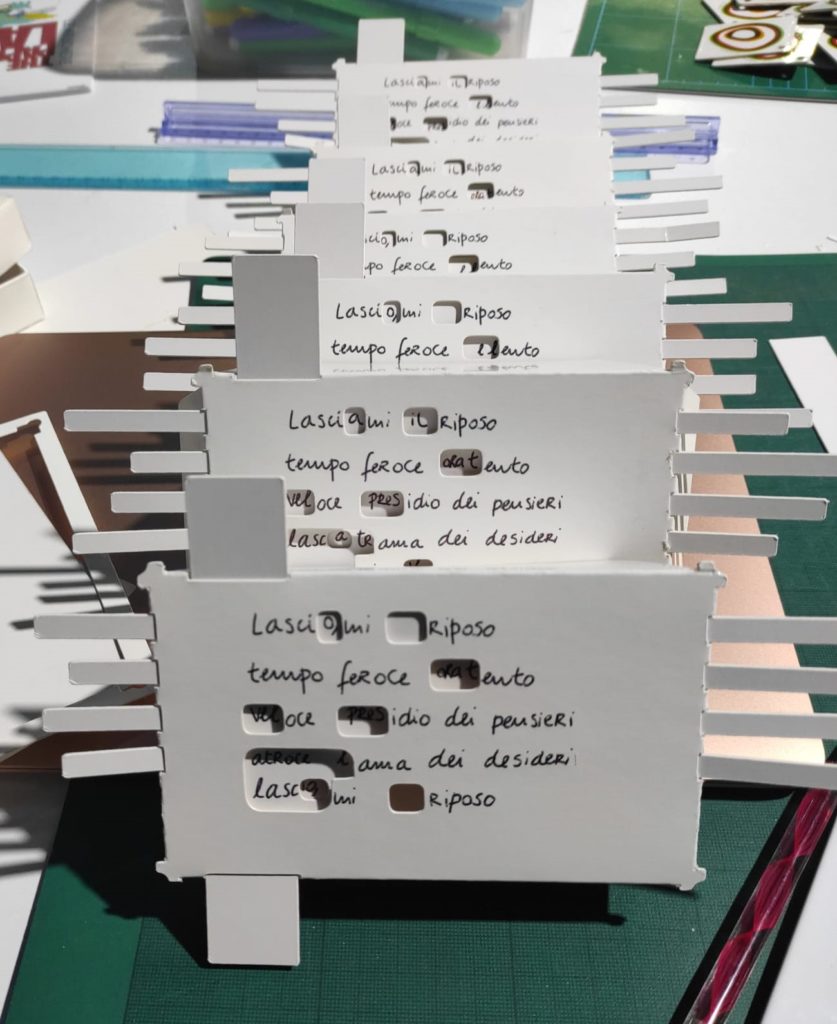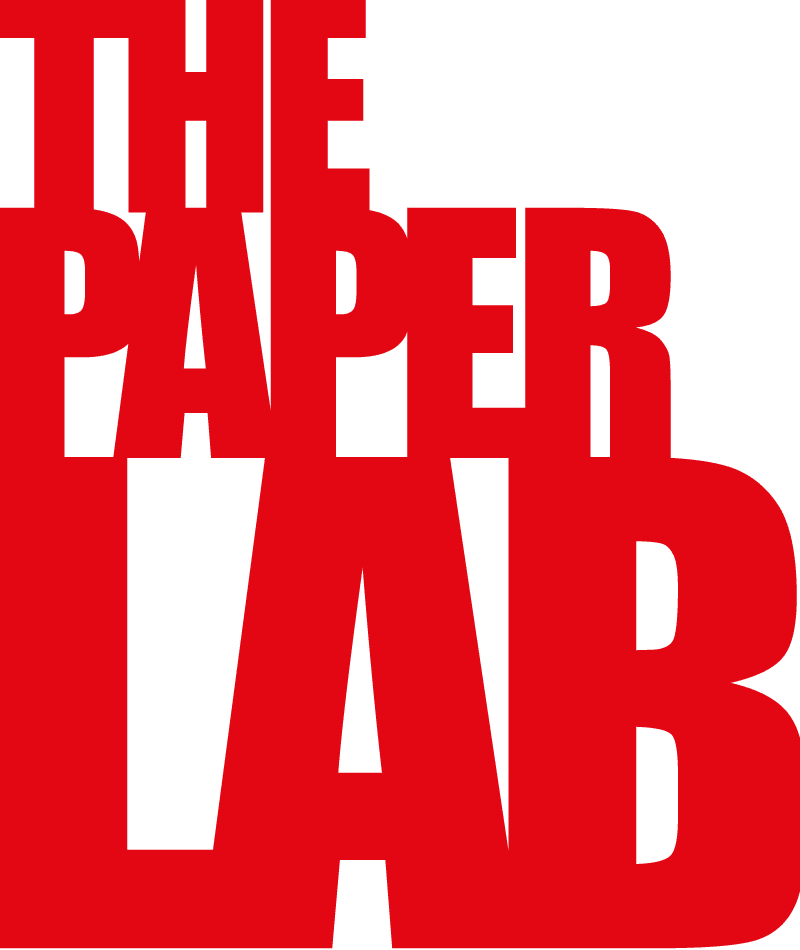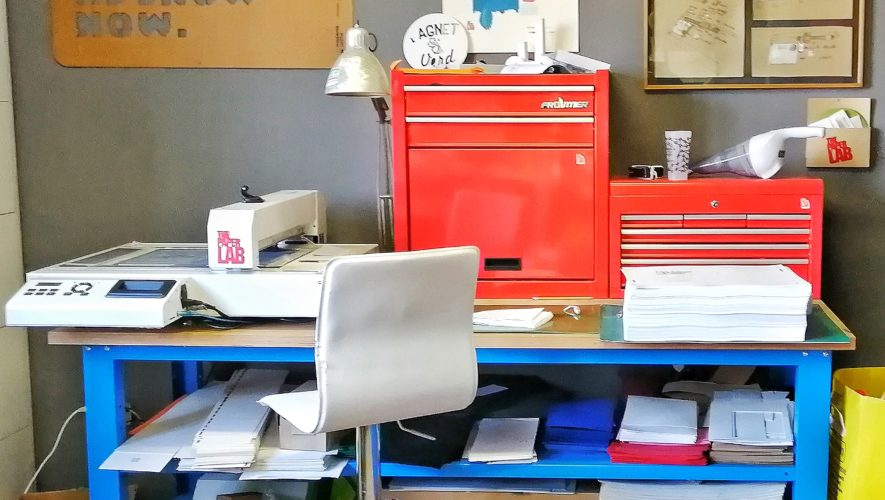Continua il discorso tra Daniela Calisi, autrice di Change e Rachele Cataldo, esperta di data visualization con cui condivide l’amore per l’interactive art.
LA GALASSIA VENTAGLIO VOL. 3: Il processo poetico
Quando sono di fronte ad un concetto complesso, sento il bisogno di dare l’idea di tutte le possibilità che quel concetto porta in sé. Mi interessa ritrarlo in tutta la sua completezza e in tutte le controversie che si porta dentro. Quindi, a volte, con l’animazione o grazie all’intervento del lettore posso farle vedere un dopo l’altra, oppure farne apparire una in un’occasione e una in un’altra.
Quindi, cerchi di rendere materico quello che è astratto.
Cerco di mantenere fluido quello che nella mia mente è fluido, che non vuol dire liquido ma neanche magmatico. Fluido nel senso che il concetto ha una sua corposità: sento tantissimo il bisogno e mi sforzo di rappresentare quello “spessore”, quella tridimensionalità che a volte mi sono resa conto che è più che tridimensionale, perché ci sono ulteriori dimensioni.
E qui finiamo sulla questione delle caselle, perché mi sono accorta che la composizione di tutti questi momenti e concetti pluridimensionali, che voglio mettere insieme dal punto di vista concettuale, acquistano la forma di una matrice multidimensionale!
Il sovrapporsi di tutte queste matrici di senso fa sì che le mie poesie siano come se fossero a strati. I percorsi possibili all’interno di questi strati, che a loro volta hanno delle caselle, vanno poi a generare i testi che io tendo a produrre.
A volte scelgo un percorso, tendo comunque a non presentare l’insieme matriciale e basta. Una cosa che io sento molto è il dovere autorale: credo che sia doveroso per un artista o poeta prendere una posizione in quanto autore e quindi fornire comunque un tracciato – per quanto complesso, per quantomeno lineare. Una volta isolato il campo o i campi semantici in cui mi muovo, poi devo fare una scelta del percorso e proporlo a chi legge; lo faccio perlopiù più per me stessa, perché per me il testo non è finito finché non ha una sua percorribilità.
Quindi si inizia su un piano bianco, su un foglio di carta, dopodiché questo oggetto passa al digitale per essere prodotto? Questi strati come sono stati composti? A mano?
Tendenzialmente il processo è molto simile a quello iniziale. Io parto con una poesia che è in parte lineare e poi ha delle parti più “spesse”: è come se invece di crescere in lunghezza, crescesse in profondità. Faccio crescere la poesia, non tanto aggiungendo una strofa dopo l’altra, quanto andando a incrementarne la corposità.
Il processo è lungo, e quando sento che la poesia è ben sedimentata avverto il bisogno di creare un percorso di lettura. È transmediale, nel senso che faccio una sorta di world building nella fase iniziale della scrittura, creo un panorama all’interno del quale la poesia può germinare e crescere. Da lì non ci si muove, so esattamente cosa voglio dire e qual è il nucleo di senso che sto tirando fuori e che voglio fare emergere.
A un certo punto mi metto a ordinare queste escrescenze in un’esperienza in qualche modo cronologica. Non intendo andare a definire la cronologia precisa, ma tendenzialmente voglio che sia possibile esplorare diverse sequenze, crearne di diverse tra loro compresenti.
Ho bisogno che il testo nella sua complessità e stratificazione sia tutto lì. Che sia a disposizione per essere esplorato.

On continue le discours entre Daniela Calisi, autrice de Change et Rachele Cataldo, experte de data visualization avec laquelle elle partage l’amour pour l’interactive art.
Vérsion Française
LA GALAXIE ÉVENTAIL VOL.3: le processus poétique
Quand je suis face à un concept controversé, je sens le besoin de trouver toutes les possibilités que ce concept porte avec lui: je suis intéressée à tout ça intégralité et ses controverses. Donc, parfois, avec l’animation je peux le montrer en séquence ou l’une à une occasion et l’une à une autre.
Alors, vous cherchez de rendre métrique ce qui est abstrait.
Moi, je cherche de conserver fluide ce qui dans ma tête est fluide, et il ne signifie ni liquide ni magmatique. Avec ça, j’entends que le concept a du corp, une densite: je le sens beaucoup et je m’efforce de représenter cette épaisseur, cette tridimensionnalité qui, parfois, a plusieurs autres dimensions.
Nous arrivons à la question des cases parce que j’ai réalisé que la composition de tous ces moments et concepts pluridimensionnels que je veux réunir de façon conceptuelle, ils prennent la forme d’une matrice multidimensionnelle!
Le chevauchement de toutes ces matrices de sens rend mes poésies comme si elle était en couches. Les parcours possibles à l’intérieur de ces couches génèrent ensuite des textes que je produis.
Parfois, je choisis un parcours, je ne présente pas seulement l’ensemble matriciel. Je sens un grand devoir autonome: je crois qu’un artiste devrait prendre une position et fournir une piste, aussi complexe, aussi linéaire. Après avoir isolé le champ ou les champs sémantiques dont je me déplace, je dois faire un choix de parcours et le proposer à ce qui le lit. Je le fais surtout pour moi même, parce que selon moi le texte n’est pas terminé tant qu’il n’a pas sa propre route.
Donc, on commence sur un plan blanc, sur un feuille de papier, ensuite cet objet devient digital pour etre produit? Et ces couches, comment elles ont été composées? A la main?
Le processus est très similaire à celui initial. Je pars avec une poésie qui est aussi linéaire et aussi avec des parties plus épaisses: c’est comme si à la place de se développer en longesses, elle se développe en largesse et en profondeur. Je laisse pousser la poésie, sans ajouter une strophe après l’autre, sinon en augmentant le corps et donc la densité.
Il s’agit d’un long processus, et quand je pense que la poésie est bien sédimentée, je sens le besoin de créer un parcours de lecture. C’est transmediale, c’est-à- dire que je fais une sorte de world building dans la première phase d’écriture, je crée un panorama dont la poésie peut s’élever. On ne bouge pas d’ici: je sais exactement ce que je veux dire et le sens que je veux faire émerger.
Tout d’abord j’ordonne ces protubérances dans une expérience, d’une certaine façon, chronologique. Je ne veux pas définir le type de chronologie, mais je voudrais qu’il soit possible d’explorer beaucoup de séquences, et en créer plusieurs entre eux.
J’ai besoin de trouver tout ça dans la complexité et dans la stratification du texte. Il faut que tout soit disponible pour être exploré.
English version.
The conversation between Daniela Calisi, author of Change, and Rachele Cataldo, a data visualisation expert with whom she shares a passion of interactive art, continues.
THE FOLDING FAN GALAXY VOL.3 : The poetic process
When I am confronted with a complex concept, I feel the need to give an idea of all the possibilities that this concept holds. I’m interested in portraying it in all its completeness and in all the controversies it carries within. So sometimes, with animation or with the intervention of the reader, I can show them one after the other, or make one appear on one occasion and one on another.
So you’re trying to make material what is abstract.
I try to keep fluid what in my mind is fluid, which does not mean liquid but not even magmatic. Fluid in the sense that the concept has its own body: I feel a great need and make an effort to represent that “thickness”, that three-dimensionality that sometimes I realise is more than three-dimensional, because there are other dimensions.
And here we end on the question of boxes, because I realised that the composition of all these multidimensional moments and concepts, which I want to put together conceptually, take the form of a multidimensional matrix!
The overlapping of all these matrices of meaning makes my poems feel like they were made from layers. The possible paths within these layers, which in turn have boxes, then go on to generate the texts that I tend to produce.
Sometimes I choose a path, and tend not to present the whole matrix and that’s it. One thing I feel very strongly is the authorial duty: I believe it is the duty of an artist or poet to take a position as author and therefore to provide a path – whether complex or linear. Once I have isolated the semantic field or fields in which I move, then I have to make a choice of path and propose it to the reader; I do this mostly for myself, because for me the text is not finished until it has its own practicability.
So you start on a white plane, on a sheet of paper, and then this object is digitised to be produced? How are these layers composed? By hand?
The process tends to be very similar to the initial one. I start with a poem that is partly linear and then has thicker parts: it is as if, instead of growing in length, it grows in depth. I make the poem grow, not so much by adding one stanza after another, but by increasing its body.
It is a long process, and when I feel the poem is well established I feel the need to create a reading path. It’s transmedial, in the sense that I do a sort of world building in the initial phase of writing, I create a landscape within which the poem can germinate and grow. I know exactly what I want to say and what is the nucleus of meaning that I am bringing out and that I want to bring out.
At a certain point I start to order these excrescences in a somewhat chronological experience. I don’t want to go and define the precise chronology, but I tend to want it to be possible to explore different sequences, to create different sequences that are coexisting.
I need the text in its complexity and stratification to be all there. Available to be explored.
Intervista di Rachele Cataldo
Estrapolazione di Claudia Virzì
Traduzione francese di Federica D’Amico
Traduzione inglese di Maria Graziana Ronchi
Editing di Alessandra Richetto
Vol. 1 – Vol. 2 – Vol. 4 – Vol. 5 – Vol. 6 – Vol. 7 – Vol. 8 – Vol. 9 – Vol. 10 – Vol. 11
Vérsion Française ci-dessous.
English version below.

